Quite naturally, there’s been a lot of attention directed at how NHS and care home services have been affected by Covid-19. The situations faced in these settings are ones that few of us can imagine. There are long-term implications for many care services.
The PULSE survey carried out by the National Care Forum at the end of last year throws light on the many ways that the operation of care services has been affected. In care homes, occupancy rates are down to levels that may be unviable. And there are extra demands to manage testing, enhanced infection control and PPE procurement.
This is alongside high levels of staff absence, exacerbated by Covid-tests and the need to self-isolate when a staff member shows symptoms or someone in their household tests positive. Not to mention absence due to stress or mental health issues.
Covid and Community Based Services
But there’s a less publicised area of care that has also been badly affected – community based services. The PULSE survey paints a picture of providers and brokerage teams under increasing pressure. Community care providers were already running under-staffed before Covid struck. Since the pandemic started they have experienced higher staff absence rates for the same reasons afflicting care home staff.
Nearly two thirds of services are unable to run or are running at greatly reduced capacity. Remember too, that the survey was carried out in November when infection rates were lower. Sadly, the problems will likely get worse before the situation can start to improve.
We know all too well the cost in human terms of reduced service levels: isolation, loneliness, less social contact and more stress for hard-pressed carers.
The situation could never have been completely planned for, but it’s identified areas of the social care infrastructure that need to be reformed. These vulnerable aspects of the service weren’t a complete surprise. The interface between health and care services and the efficiency of care brokerage and care service delivery were under the microscope even before the pandemic.
Streamlined Care Brokerage
There’s no doubt that a streamlined, secure, brokerage system operated on a cloud-based platform offers greater agility and responsiveness, as well as more flexibility in commissioning. For care providers under pressure it demands much less time to review and bid for care packages – they’re notified automatically and carry out every part of the process in a single application.
Tools like Ulysses eBrokerage also take pressure off brokerage teams through a highly streamlined process that eliminates the emails and spreadsheets that clog up the current system. The platform enables available care provider resources to be fully deployed. If a care provider unexpectedly finds itself unable to deliver a care package it can be quickly and easily rebrokered or traded with another provider.
Even with vaccinations rolling out, the care sector will continue to face an uphill struggle. Covid-19 case volumes are rising and recovery from severe Covid symptoms can take a long time. Brokerage is one part of the system that can be improved quickly. Secure eBrokerage can be up and running within two weeks and can be procured through the G-Cloud 12 framework, via Ulysses eBrokerage Cloud Software.
Interested? Why not get in touch.

